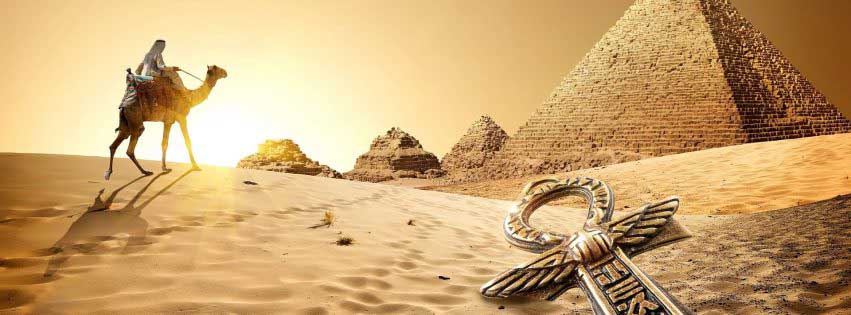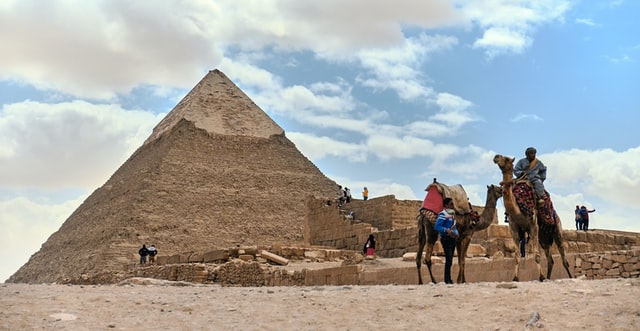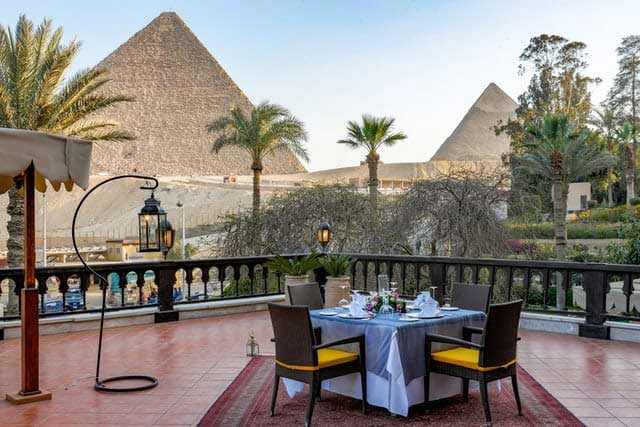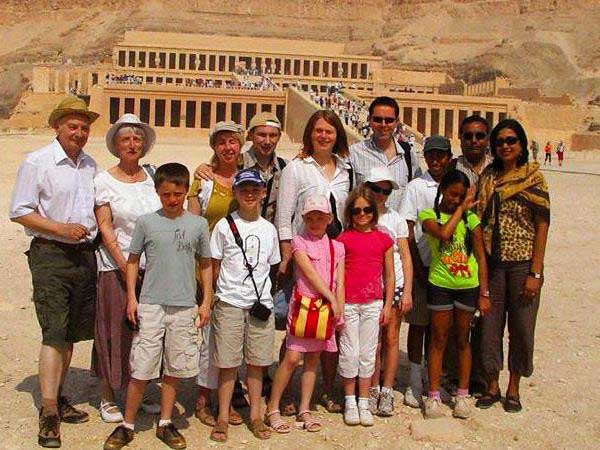Valley of The Kings
The Valley of the Kings also known as the Valley of the Gates of the Kings is a valley in Egypt where, for a period of nearly 500 years from the 16th to 11th century BC, rock-cut tombs were excavated for the pharaohs and powerful nobles of the New Kingdom (the Eighteenth to the Twentieth Dynasties of Ancient Egypt
This article contains information for foreigners who wish to visit valley of the kings including:
- What is in valley of the kings?
- Where is valley of the kings located?
- How far is valley of the kings from cairo?
- Your way to valley of the kings
- How much does it cost to visit the Valley of the Kings?
- When was the Valley of the Kings discovered?
- How the tombs lasted with time?
- Visiting Valley of the Kings
- Who been buried in valley of the kings?
- Did pharaohs get buried with their servants?
- What would a pharaoh take to the afterlife?
- Where is king Tut Mummy?
- How they choosed the location of valley of the kings?
- Why was Valley of the Kings built?
- Recommended Tours to valley of the kings
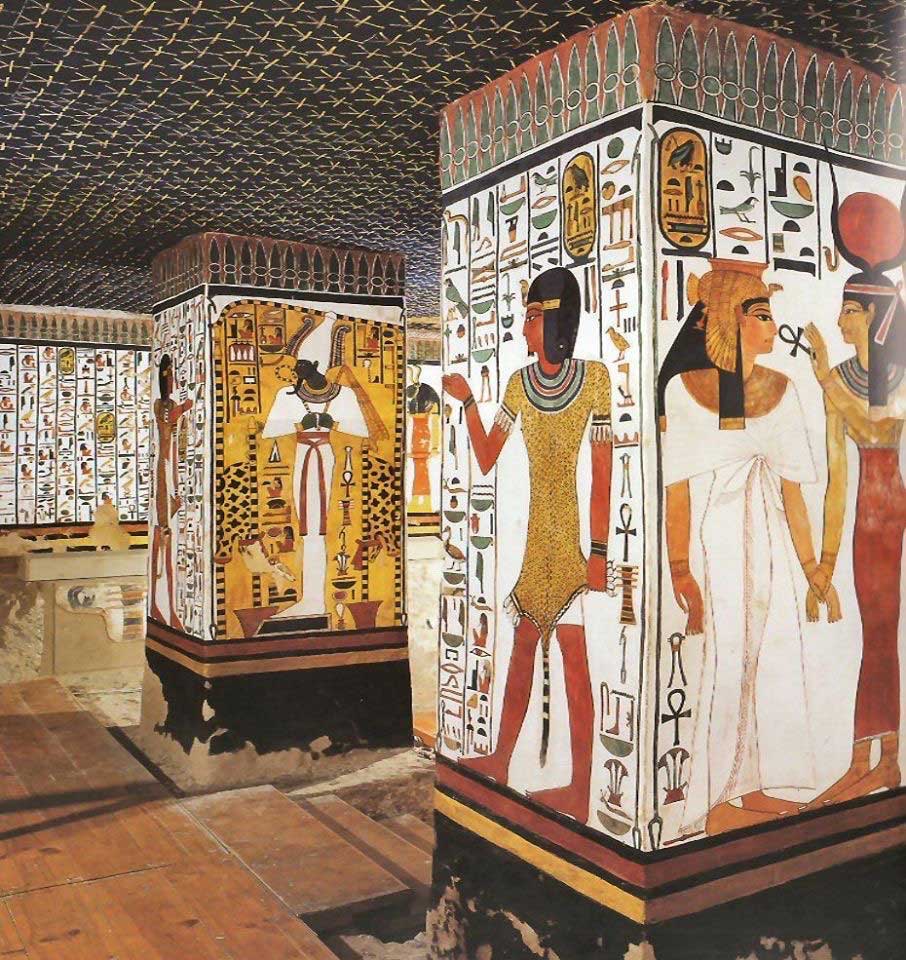
What is in valley of the kings?
The Valley of the Kings is famous for its royal tombs. These beautifully painted tombs have been designated a World Heritage Site by UNESCO. For over a thousand years, the kings, queens and nobles of the New Kingdom (1500-1070 B.C.) were buried in this valley, which is the world’s most magnificent burial ground.
Where is valley of the kings located?
The Valley of the Kings is located on the west bank of the Nile River near Luxor. The west bank of Luxor had been the site of royal burials since around 2100 BC, but it was the pharaohs of the New Kingdom period (1550–1069 BC) who chose this isolated valley. Once called the Great Necropolis of Millions of Years of Pharaoh, or the Place of Truth, the Valley of the Kings has 63 magnificent royal tombs.
It is the most famous site for having unique collections of tombs and breathtaking ancient ruins. That location makes it one of the hottest spots for exploring ancient Egyptian history.The richness of the findings here in the Valley of the Kings has kept archeologists busy for nearly two centuries. If all of the tombs here where open to visitors it would be nearly impossible to actually make it to all of them, but thankfully the possibility of such a huge task is eliminated for you.
How far is valley of the kings from cairo?
The distance between Cairo and Valley of the Kings is 499 km. The road distance is 636.8 km.
Your way to valley of the kings
The road into the Valley of the Kings is a gradual, dry, hot climb, so be prepared, especially if you are riding a bicycle. Also be prepared to run the gauntlet of the tourist bazaar, which sells soft drinks, ice creams and snacks alongside the tat. The air-conditioned Valley of the Kings Visitors Centre & Ticket Booth has a good model of the valley, a movie about Carter’s discovery of the tomb of Tutankhamun and toilets (there are Portakabins higher up, but this is the one to use). A tuf-tuf (a little electrical train) ferries visitors between the visitors centre and the tombs (it can be hot during summer). The ride costs LE4. It’s worth having a torch to illuminate badly lit areas but you cannot take a camera without an extra charge of 300 Egyptian pounds photography ticket.
How much does it cost to visit the Valley of the Kings?
Tickets, which cost 240 Egyptian pounds (approximately $15) for adults and 120 Egyptian pounds (or $7) for students, can be purchased at the entrance’s visitors center. All tickets include access to three tombs, but additional fees apply to visit the tombs of Tutankhamun, Ay and Ramses VI.
When was the Valley of the Kings discovered?
This area has been a focus of archaeological and Egyptological exploration since the end of the eighteenth century, and its tombs and burials continue to stimulate research and interest.
Discovered by Howards Carter in an excavation expedition in 1922, one of the most important tombs found in the Valley of the Kings is the tomb of Pharaoh Tutankhamun and all of his treasures. This discovery has ever since then attracted tourists from all over the world as the treasures found traveled the world on a tour to spread the news that this very important discovery for the history of our civilization was discovered in the Valley of the kings. To this day excavations are still in process in some areas of the Valley of the Kings and a rotation system is in place for visitors to visit the tombs as restoration procedures are in place to recover the tombs that were found. In 1979, it became a World Heritage Site, along with the rest of the Theban Necropolis. Exploration, excavation and conservation continues in the valley, and a new tourist centre has recently been opened.
With the 2005 discovery of a new chamber and the 2008 discovery of two further tomb entrances, the valley is known to contain 63 tombs and chambers (ranging in size from KV54, a simple pit, to KV5, a complex tomb with over 120 chambers). It was the principal burial place of the major royal figures of the Egyptian New Kingdom, as well as a number of privileged nobles. The royal tombs are decorated with scenes from Egyptian mythology and give clues as to the beliefs and funerary practices of the period. Almost all of the tombs seem to have been opened and robbed in antiquity, but they still give an idea of the opulence and power of the pharaohs.
How the tombs lasted with time?
The tombs have suffered greatly from treasure hunters, floods and, in recent years, mass tourism: carbon dioxide, friction and the humidity produced by the average 2.8g of sweat left by each visitor have affected the reliefs and the stability of paintings that were made on plaster laid over limestone. The Department of Antiquities has installed dehumidifiers and glass screens in the worst-affected tombs. They have also introduced a rotation system: a limited number of tombs are open to the public at any one time. The entry ticket gains access to three tombs, with extra tickets to see the tombs of Ay, Tutankhamun, Seti I and Ramses VI.
Visiting the Valley of the Kings
The tourism authorities only open a few of the tombs at a time in order to allow for a continual cycle of upkeep and restoration. Regardless, there are certain to be several impressive tombs open at any time. Be careful to heed the advice of your guide or guidebook on which ones to enter. The most famous tombs are not necessarily the most impressive and a ticket to the Valley of the Kings only allows you to enter three tombs. A separate ticket is required to enter Tutankhamun’s tomb although you may find it a disappointing sight, especially given the extra cost.
Who been buried in valley of the kings?
The rulers of the Eighteenth, Nineteenth, and Twentieth Dynasties of Egypt’s prosperous New Kingdom (c.1550–1069 BC) were buried in a desolate dry river valley across the river from the ancient city of Thebes (modern Luxor), hence its modern name of the Valley of the Kings. This moniker is not entirely accurate, however, since some members of the royal family aside from the king were buried here as well, as were a few non-royal, albeit very high-ranking, individuals. The Valley of the Kings is divided into the East and West Valleys. The eastern is by far the more iconic of the two, as the western valley contains only a handful of tombs. In all, the Valley of the Kings includes over sixty tombs and an additional twenty unfinished ones that are little more than pits.
Despite its name, the Valley of the Kings also contains the tombs of favorite nobles as well as the wives and children of both nobles and pharaohs. Therefore, only about twenty of the tombs actually contain the remains of kings. The remains of nobles and of the royal family, together with unmarked pits and embalming caches, make up the rest.
During the New Kingdom’s period of ancient Egyptian (1539-1075 B.C.), the Valley of the Kings was the major burial ground for most of the royal pharaohs. The most famous pharaohs buried there were Tutankhamun, Seti I, and Ramses II. Also, you will find there the royal tombs of most of the 18th, 19th, and 20th dynasties queens, high priests, and other elites of that era. Remember that Tutankhamun was a relatively minor pharaoh, made famous by the fact that his tomb is the only one in the valley that was discovered with its contents still inside, not by the grandeur of his tomb relative to the others. Those contents are now on display in the Egyptian Museum in Cairo.

Did pharaohs get buried with their servants?
Pharaohs were buried with models of their servants. But early pharaohs were buried with real servants – knocked on the head.
What would a pharaoh take to the afterlife?
The journey to the afterlife was long, and so Egyptians were buried with food, water and wine to help them on their travels. In Tutankhamun’s tomb, archaeologists found thirty six jars of vintage wine and eight baskets of fruit.
Where is king Tut Mummy?
Today the most fragile artifacts, including the burial mask, no longer leave Egypt. Tutankhamun’s mummy remains on display within the tomb in the Valley of the Kings in the KV62 chamber, his layered coffins replaced with a climate-controlled glass box.
How they choosed the location of valley of the kings
The site for this royal burial ground was selected carefully. Its location on specifically the west side of the Nile is significant as well. Because the sun god set (died) in the western horizon in order to be reborn, rejuvenated, in the eastern horizon, the west thus came to have funerary associations. Ancient Egyptian cemeteries were generally situated on the west bank of the Nile for this reason.
The powerful kings of the New Kingdom were laid to rest under the shadow of a pyramid-shaped peak rising out of the cliffs surrounding the valley. The selection of even the specific valley in which the royal tombs were excavated was not left to chance. The pyramid was a symbol of rebirth and thus eternal life, and the presence of a natural pyramid was seen as a sign of the divine. This entire area, and the peak itself, was sacred to a funerary aspect of the goddess Hathor: the “Mistress of the West”.
The isolated nature of this valley was yet another reason for its selection as the final resting place of Pharaoh. Tomb robberies occurred even in ancient times. The Egyptians were of aware of this and the fate of the Old and Middle Kingdom pyramids, and opted for hidden, underground tombs in a secluded desert valley. The first New Kingdom ruler that is confirmed to have been buried in the Valley of the Kings was Thutmose I (c.1504–1492 BC), the third king of the Eighteenth Dynasty. According to Ineni, the high official who was in charge of the digging of his tomb: “I oversaw the excavation of the cliff-tomb of his Person [the king] in privacy; none seeing, none hearing.”
Why was Valley of the Kings built?
Building tombs were part of the ancient Egyptian’s belief of the afterlife and their preparations for the next world. The ancient Egyptians strongly believed in the afterlife where they were promised to continue their lives and pharaohs were promised to ally with the gods. That’s why the process of Mummification was important to preserve the body of the deceased to allow his eternal soul to wake up and live again in the afterlife. The ancient tombs also included all the belongings of the deceased as it was believed that they might need them once they woke up to live the eternal life.
Salima Ikram, a professor of Egyptology at American University in Cairo and a National Geographic grantee said that the ancient Egyptian pharaohs included many things in their tombs including pieces of furniture, clothes, and jewelry. However, what remains a mystery is that they didn’t have any books buried with them.
The most interesting fact was that the tombs included many kinds of foods and drinks such as wine and beer, as well as the precious objects that meant to help the deceased pass on to the afterlife.

Recommended Tours to valley of the kings:
Frequently asked questions about visiting Egypt
Is it safe to travel to Egypt
Is it safe to travel to Egypt?
Is Egypt Safe for Americans to Travel to
Is Egypt Safe for Americans to Travel to?
We get this question a lot at Bastet Travel In short, Americans and other visitors can rest easy: yes, Egypt is a safe country for tourists. And the rest of the world seems to agree — after years of middling numbers, tourism in Egypt is steadily rising towards its former highs, hosting over 9 million sightseers in 2018. The longer answer is worth exploring, though, and we have some assurances to offer all our clients who join us on all of our Egypt Travel Packages.Is a negative COVID-19 test (PCR and/or serology) required for entry?
- Yes.
- All passengers travelling to Egypt (including Egyptians) must be in possession of negative PCR test certificate for COVID-19, taken at a maximum of 72 hours before their flight departure time.
- Passengers travelling from Japan, China, Thailand, North America, South America, Canada, London Heathrow, Paris, and Frankfurt will be allowed to provide the test certificate performed at a maximum of 96 hours prior to flight departure, due to the long travel and transit period from these airports.
- Although we understand the PCR testing policy to require a test result performed no more than 96 hours before the original departing flight, we have received anecdotal reports that some travelers have been denied entry when their PCR test was performed more than 96 hours prior to the departure of their connecting flight.
- Travelers must present paper copies of the test results; digital copies will not be accepted.
- Children under the age of six of all nationalities are exempt.
Are PCR and/or antigen tests available for US citizens in Egypt?
Yes, at numerous private testing centers, as well as the Central Public Health Lab.
Has the government of Egypt approved a COVID-19 vaccine for use?
Yes
Which vaccines are available in Egypt?
AstraZeneca and Sinopharm.
Are vaccines available in Egypt for tourists to receive?
Yes, the media has reported that anyone over age 18, including foreign residents, can now register for the vaccine. There is limited supply of the vaccine available and the media reports that priority for the vaccine will go to the elderly and those with chronic illnesses.
Are test results reliably available within 72 hours?
Yes. Most test providers offer 48-hour turnaround. Faster service is possible at extra cost.
How can I obtain my Visa to visit Egypt?
How can I obtain my visa to visit Egypt?
What do i need to know when traveling to Egypt?
A few Things to Know Before Traveling to Egypt
You need a visa, and you can buy it upon arrival. The dollar goes far in Egypt. The traffic in Cairo/Giza is outrageous, but taxis (and Ubers) are cheap. You should not skip the Pyramids and Sphinx. The Pyramids and Sphinx are just the beginning of the ancient treasures. Islamic Cairo is amazing. Aswan should not be missed The Sahara is more than sand It is safer than you thinkWhat are the best day trips in Egypt
What are the most famous tourist attractions in Egypt
What are the most famous tourist attractions in Egypt?
Egypt has so much for travelers to see and do, it’s the perfect country for a mix of activities combining culture, adventure, and relaxation. Find the best places to visit with our list of the top tourist attractions in Egypt.- Pyramids of Giza
- Valley of the kings
- Luxor’s Karnak Temple
- The Egyptian Museum
- Christian and Islamic Cairo
- The White Desert and Baharyia Oasis
- Siwa Oasis
- Abu simbel Temples
- Aswan
- Alexandria
- St. Catherine’s Monastery
- The Nubian village
- Nile River Cruise
- Hurghada
- South of Sinai
Related Articles
Related
Seth
Also known as Set, Setekh, Suty and Sutekh, Seth was the god of chaos, darkness, violence, evil, deserts, storms, and one of the Osirian gods. In the Osiris myth, he is the murderer of Osiris (in some versions of the myth, he tricks Osiris into laying down in a coffin and then seals it shut.)
Ancient Egyptian Gods And Goddesses
For all ancient Egyptians, the world was filled with mystery. Much of what they experienced in the world around them was unknowable and frightening. The ancient Egyptian gods and goddesses represented aspects of the Egyptians’ natural and “supernatural” surroundings and helped them understand its many aspects.
Horus
Depicted as a falcon or as a man with a falcon’s head, Horus was a sky god associated with war and hunting. He was also the embodiment of the divine kingship, and in some eras the reigning king was considered to be a manifestation of Horus.



